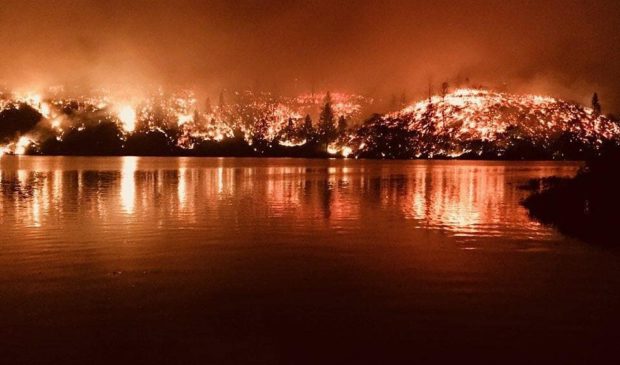Newsletter Signup
The Austin Monitor thanks its sponsors. Become one.
Most Popular Stories
- A once-banned type of building is back in favor – and the Planning Commission approves
- Austin-Bergstrom International Airport announces new flight service while anticipating capacity cuts
- City facing a $33 million deficit for 2026
- East Austin’s ‘wishbone’ bridge takes shape as concrete beams almost span Lady Bird Lake
- SOS suing state agency over failure to provide information on MoPac expansion
-
Discover News By District

Austin Fire Department’s burning desire for education takes them to California
Tuesday, November 6, 2018 by Jessi Devenyns
Firefighters in Austin are adept and experienced when it comes to fighting brush fires. However, when it comes to large-scale wildland/urban-interface fires, our city’s firefighters don’t have as much experience.
So, in hopes of gaining some real-life education in anticipation of a “mega-fire” that is feared to happen in West Austin, the Austin Fire Department volunteered some of its firefighters to help extinguish this summer’s Carr Fire in California.
“This is the first time the Austin Fire Department was deployed outside the state,” said Assistant Fire Chief Richard Davis at the Nov. 5 meeting of the Public Safety Commission. When the state of California called for assistance, five Austin firefighters responded and traveled to help tackle the 229,651-acre fire – approximately seven times bigger than the 2011 Bastrop wildfire – that was raging in Northern California.
“It was mind-numbingly exhausting,” Battalion Chief Randy Denzer told the commissioners. “We called it the grind.”
Still, Lieutenant Steve Gibbon insisted that the experience was invaluable. “Just for us to be exposed to this type 1 incident management team was amazing … you can’t read it in a textbook.” He explained that experiencing such a high-intensity fire helped the Austin team learn how to do structure triage and how to operate in entire neighborhoods that are burning. Likewise, Gibbon explained that he and his four colleagues saw firsthand how to implement effective evacuation planning, including all of the preparation that is required before the first column of smoke has even been sighted. “These are all training things we would not get in Central Texas,” he said.
The training is also free. According to Denzer, the city of Austin doesn’t pay a dime to send trained staff to other locations to offer assistance in fighting fires. The federal government reimburses all of their expenditures. Denzer encouraged the commissioners to inform city officials about the benefits of fighting fires in other locations should future opportunities arise.
Curious to know the precise value of this experience to the city, Commissioner Kim Rossmo wanted to know what lessons could be applied to Austin. “What should we be doing that we’re not?” he asked.
Chief Denzer noted that if money was no constraint he would have a laundry list of recommendations. However, being realistic, he suggested that the city and the fire department engage in more community work to prepare Austinites for the threat of fire in West Austin.
Commissioner Ed Scruggs noted that it is not merely Austin that should be prepared. Surrounding municipalities need to be on the same page and have similar triage plans so that resources can move quickly to combat the blazes before they spread like wildfire.
There is only one issue with collaboration. “We’re working with more private landowners in the state of Texas,” noted Chief Denzer. That, he explained, makes it harder to have interlocked coordination like the state of California employs.
Still, the commissioners and the fire department agree that it is paramount that they prepare the citizens of Austin for the “big bad fire” that is going to happen in West Austin. As it stands, “If it (a mega-fire) came through West Austin right now everyone would be feeling the effects of it,” explained Denzer.
To help plan for the future, the fire department will return to the Public Safety Commission in January to continue discussing wildfire prevention and preparedness in Greater Austin.
Photo by CAL FIRE [Public domain], via Wikimedia Commons.
The Austin Monitor’s work is made possible by donations from the community. Though our reporting covers donors from time to time, we are careful to keep business and editorial efforts separate while maintaining transparency. A complete list of donors is available here, and our code of ethics is explained here.
You're a community leader
And we’re honored you look to us for serious, in-depth news. You know a strong community needs local and dedicated watchdog reporting. We’re here for you and that won’t change. Now will you take the powerful next step and support our nonprofit news organization?





